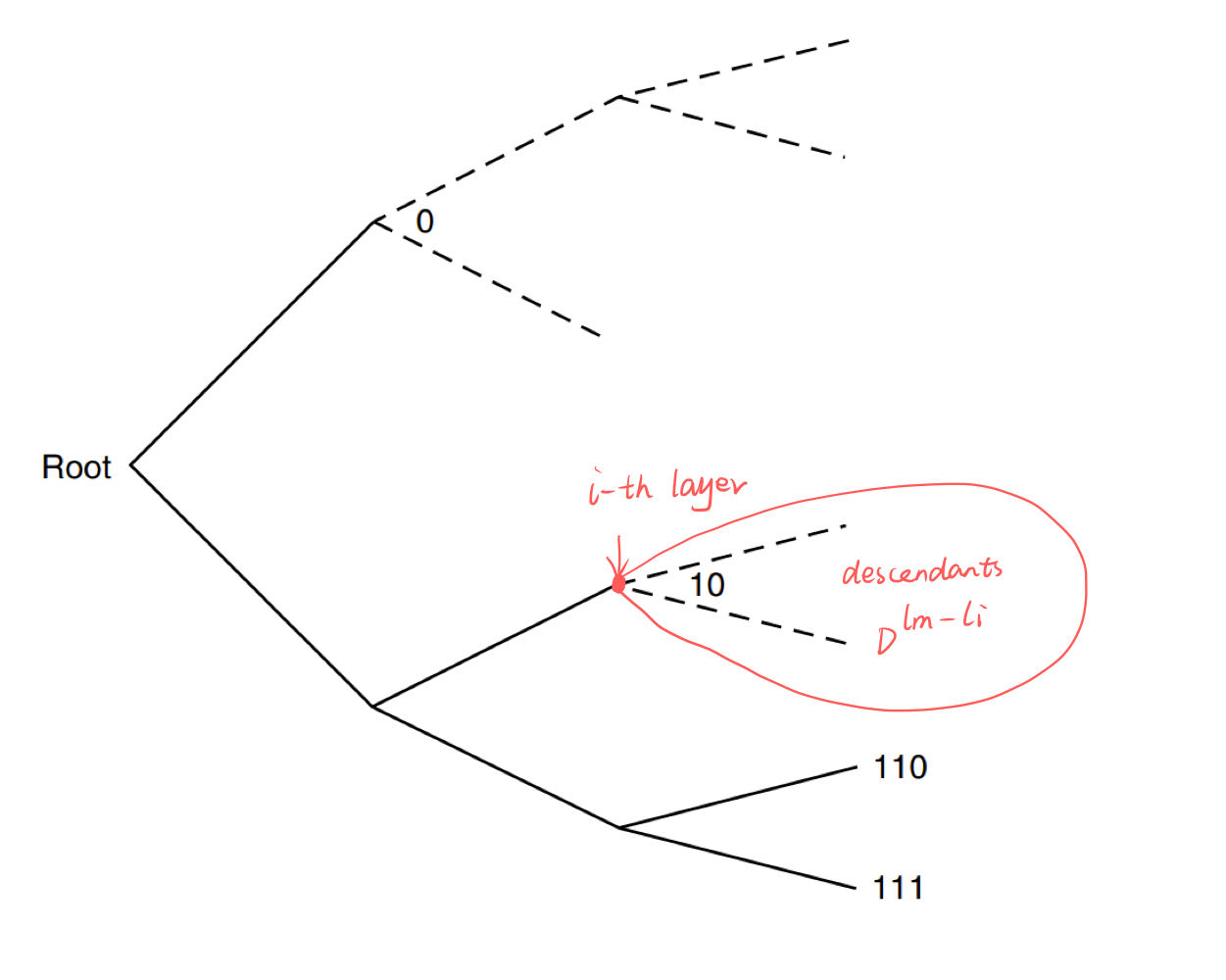首先引入一些基础的定义:
-
\(C: S_X \rightarrow \mathcal{D}^*\): the source code for a r.v. \(X\), where \(S_X\) is the range of \(X\), \(\mathcal{D}^*\) is the set of finite-length strings of symbols from a \(D\)-ary alphabet.
-
WLOG, assume that \(D\)-ary alphabet = \(\mathcal{D}=\{0,1,...,D-1\}\).
-
\(C(x)\): the codeword corresponding to \(x\)
-
\(l(x)\): the length of \(C(x)\)
-
\(L(C)=\sum_{x\in S_X} p(x)l(x)\): the expected length of a source code \(C\) for \(X\), \(p(x)\) is the pmf of \(X\).
进一步引入一些 codes 的类别定义:
-
A code \(C\) is said to be nonsingular if \(x\neq x' \Rightarrow C(x)\neq C(x')\).
-
the extension \(C^*\) of a code \(C\) is \(C(x_1 x_2 ... x_n)=c(x_1)C(x_2)...C(x_n)\).
-
A code is called uniquely decodable if its extension is nonsingular.
-
A code is called a prefix/ instantaneous code if no codeword is a prefix of any other codeword.
我们的目标:
We wish to design prefix codes with minimum \(L(C)\). If we assign the short codewords to all source symbols, \(C\) may not be prefix-free. So Kraft inequality gives the limitation of codeword lengths for prefix codes.
Thm. 5.2.1 (Kraft Inequality) For any prefix code over an alphabet of size \(D\), the codeword lengths \(l_1,l_2,...,l_m\) must satisfy the inequality
Conversely, given a set of codeword lengths that satisfy (1), there exists a prefix code with these word lengths.
证明:

-
Consider a D-ary tree, which means each node in this tree has D children.
-
Assign \(\{0,1,..., D-1\}\) to the branches arising from one node(including the root).
-
Then, each codeword is represented by a leaf on the tree, the specific symbols of each codeword are the path from root to this leaf.
-
The above figure is an example of D=2.
-
Let \(l_m\) be the length of the longest codeword, then if the code tree is complete, on \(l_m\)-th layer, there are \(D^{l_m}\) nodes/ leaves.
-
If there is a leaf at level \(l_i\) (\(l_i \leq l_m\)), which means its \(D^{l_m-l_i}\) desendants at level \(l_m\) don't exist in the tree, because \(C\) is prefix-free.
-
Then, it is very obvious that the number of these descendants are less than or equal to \(D^{l_m}\):